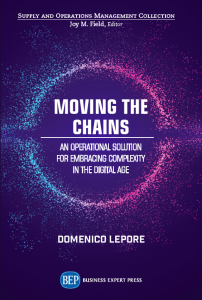
The threats of the 21st century are real – environmental, economic and social. It’s a challenging reality for everyone and it puts an even heavier burden on the shoulders of those who are in leadership. When faced with what feels like unprecedented uncertainty, how can leaders get a grip? How can they exercise any form of “control” over they way things unfold? How can they make decisions that are valid going forward? The good news is that there is 21st century knowledge available about certain principles that are universally valid when it comes to managing organizations. Understanding these principles and building behaviours based on that understanding allows leaders to navigate uncertainty.
Back to basics
If we’re talking about organizations, then asking the fundamental questions will help us get a grip. What is an organization? It’s a system. We’ve known this for a long time, and W. Edwards Deming presented the idea as far back as 1952. So having a clear understanding of what a system is becomes key. A system does not look anything like the traditional organigram. It’s a network of interdependent components that work together to achieve the goal of the system. This has deep implications for managing every aspect of how an organization works, from procurement all the way through to compensation and marketing and sales. So if you’re managing your organization without that understanding you are missing a huge piece of the puzzle. Conversely, understanding that your organization is a system that interacts with a network of other systems gives you a competitive edge. It allows you to leverage systems science mot just to continuously improve performance but also to continuously create more harmonious relationships inside and outside the company.
What are organizations made up of? People who carry out processes and/ or projects. That’s it in a nutshell. This is the key information we need to manage the entire organization and deal with uncertainty. To be a successful leader today means having a strong understanding of what processes and projects are and knowing the optimal way to manage them.
Managing uncertainty through processes and projects
What are organizations made up of? People who carry out processes and/ or projects. That’s it in a nutshell. This is the key information we need to manage the entire organization and deal with uncertainty. To be a successful leader today means having a strong understanding of what processes and projects are and knowing the optimal way to manage them.
Process and projects have very many things in common; they both are, essentially, a set of activities aimed at a very well identified goal. Both have, in general, a timeline for their execution and both need to be operated with a certain degree of statistical predictability in order to be effective (and cost effective).
Having a statistical understanding of how the processes in a company are behaving is fundamental. It is what gives leaders real insight into what is actually going on, what outcomes will be and where improvement actions need to be taken. This can be achieved through Statistical Process Control. NOT having this understanding creates enormous risk as leaders will take decisions “blindly” without understanding the impact of those decisions on the whole system. This can only increase uncertainty.
Projects, instead, are by definition a one-off activity and, more often than not, draw resources from a variety of company functions, in this way increasing the need for collaboration among people accustomed to working and thinking locally.
A project draws different competencies together in order to accomplish a specified goal, within a precise timeframe and designate cash outlay. The most strategic use of any set of competencies, and this is arguably the job of a leader, is to deploy those competencies in a way that maximizes their contribution to the overall goal of the organization. This can be done most reliably and effectively by taking into consideration available resources and for this there is a systemic approach to project management called Critical Chain from the Theory of Constraints. A major advantage of Critical Chain is the “control” mechanism that comes from the project buffer. Unlike other Project Management approaches, Critical Chain protects the project against inevitable variation by suppling a buffer of time at the end of the project. Simply by looking at how the project buffers are behaving in the projects across an organization gives leaders clear indications on what to expect and where to take meaningful action.
The “levers” that allow leaders to manage uncertainty
- Having an understanding of a company as a system gives leaders a huge advantage when it comes to complexity and uncertainty that have become the hallmarks of business today.
- Armed with the right knowledge about the universal principles that affect all organizations provides a competitive edge and ensures acceleration of flow, perhaps the most important factor in the digital age.
- Seeing and managing the organization as a system, having statistical insight into the behaviour of key processes and monitoring the project buffers using Critical Chain provide a leader with unique “levers” to manage and steer the entire system.
 Since 1999, we have been presenting a new model for a systemic organization in detail, both in terms of the mindset and how to conduct operations. We work alongside CEOs and Executive Teams to support the shift towards more effective, systemic strategy and operations. Our books include ‘Deming and Goldratt: The Decalogue‘, ‘Sechel: Logic, Language and Tools to Manage Any Organization as a Network’, ‘The Human Constraint‘, ‘Quality, Involvement and Flow: The Systemic Organization’ , and now ‘Moving the Chains: An Operational Solution to Embrace Complexity in the Digital Age‘ .We support our international clients through education, training and the Ess3ntial multi-project software using Critical Chain to schedule competencies and unlock the potential of human resources. Based on our proprietary Decalogue methodology.
Since 1999, we have been presenting a new model for a systemic organization in detail, both in terms of the mindset and how to conduct operations. We work alongside CEOs and Executive Teams to support the shift towards more effective, systemic strategy and operations. Our books include ‘Deming and Goldratt: The Decalogue‘, ‘Sechel: Logic, Language and Tools to Manage Any Organization as a Network’, ‘The Human Constraint‘, ‘Quality, Involvement and Flow: The Systemic Organization’ , and now ‘Moving the Chains: An Operational Solution to Embrace Complexity in the Digital Age‘ .We support our international clients through education, training and the Ess3ntial multi-project software using Critical Chain to schedule competencies and unlock the potential of human resources. Based on our proprietary Decalogue methodology.





Leave a Reply